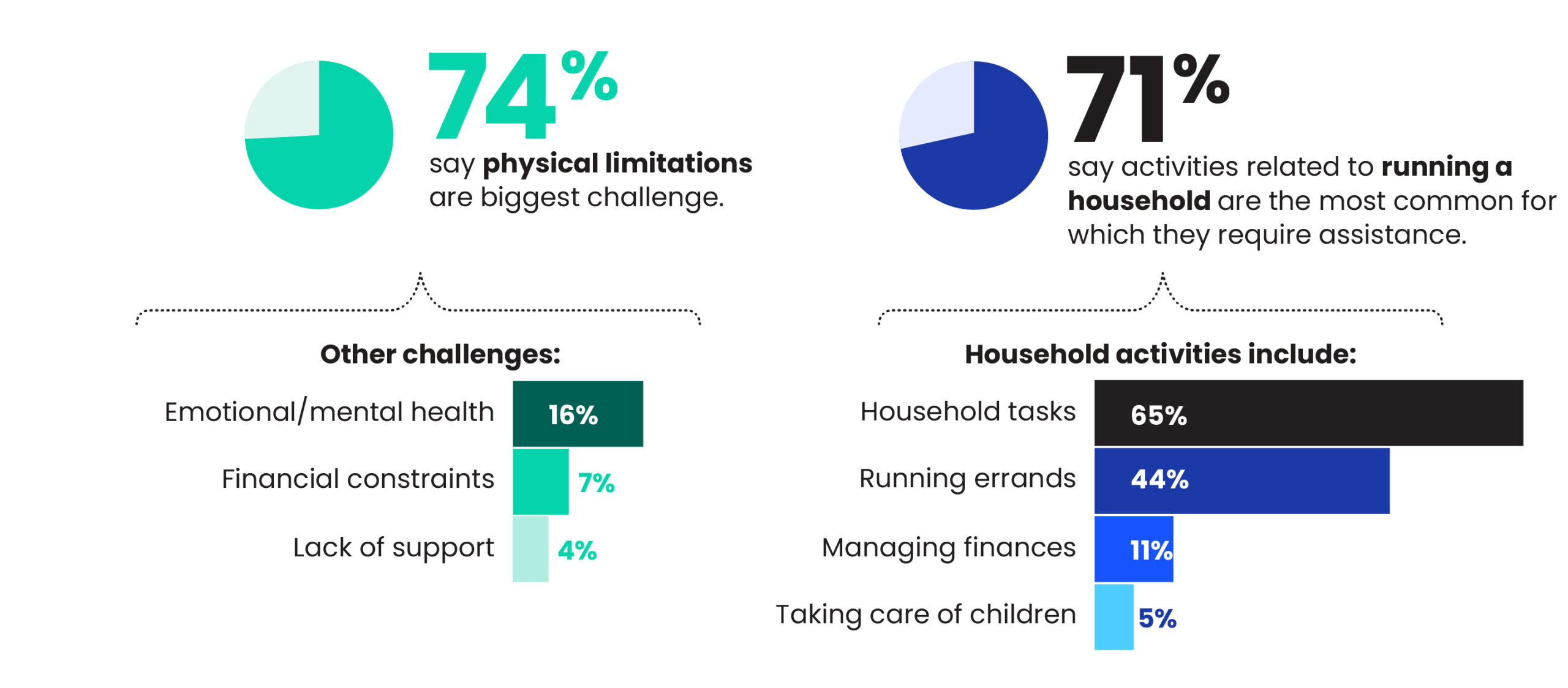Survey report:
Daily living challenges for people with rare diseases
By Bionews Staff | September 5, 2024
Bionews recently conducted the largest-ever U.S. survey of its kind. The Bionews Rare Disease Survey 2024 included more than 5,000 patients and caregivers sharing their experiences.
First, we’re taking a look at how participants responded to questions about daily life (e.g., daily activities, social life, and mental well-being) and how they manage the realities of living with a rare disease. Here are eight key takeaways.

1. Managing Daily Activities
Physical limitations are the biggest challenge for people with rare diseases in managing daily activities.

In their words: Columnist Sean Baumstark has had to accept that, no matter how tenacious he may be, some things he wants to do are just not possible with Friedreich’s ataxia.
2. Emotional and mental well-being
Emotional and mental health is especially challenging for younger adults with rare diseases.

In their words: Columnist Jen Cueva, who has pulmonary hypertension, wants people to know that chronic illness affects more than the physical body; it takes its toll on emotional well-being as well.
3. Pain and fatigue
Pain and fatigue have a significant effect on rare disease patients’ daily routines and energy levels.

In their words: Columnist Dwayne Wilson, who lives with Pompe disease, describes how he deals with pain and fatigue by balancing the good days and bad days.
4. Unpredictable symptoms
Unpredictable symptoms make it challenging for people with rare diseases to plan ahead, especially for women and younger people.

In their words: Columnist Alliah Caarielle, who cares for her husband with hemophilia B, says the fear of flare-ups makes planning anything stressful. Her hack is building in flexibility.
5. Living with uncertainty
Living with uncertainty about the future is stressful and overwhelming for rare disease patients.

In their words: Columnist Shalom Lim, who has Duchenne muscular dystrophy, isn’t always sure what his future holds, but he’s not going to stop trying to achieve his goals and dreams.
6. Anxiety and depression
Anxiety and depression make it hard for people with rare diseases to maintain a positive outlook, especially for women and younger adults.

In their words: Columnist Mark Harrington, who has myasthenia gravis, battles negativity to find hope, a challenge many with rare diseases face.
7. Relationships
Living with a rare disease has an effect on patients’ romantic relationships.

In their words: Columnist Sherry Toh, who has spinal muscular atrophy, craved connection, but the fear of rejection made dating difficult.
8. Gender and age differences
Female and younger patients experience a disproportionate burden in managing daily life, emotional well-being, and planning ahead.

In their words: Kendall Harvey, who has Friedreich’s ataxia, shares how she balances two contrasting life roles: being a mother and a person living with disability.
About the survey
Bionews conducted a nationwide online survey called the Rare Disease Survey 2024, between January and February 2024. A total of 5,032 rare disease patients and caregivers responded to the survey, which included 48 questions exploring the patient experience across diagnosis, treatment, and daily life.
For more detailed findings, please refer to our 6-page PDF survey report here.